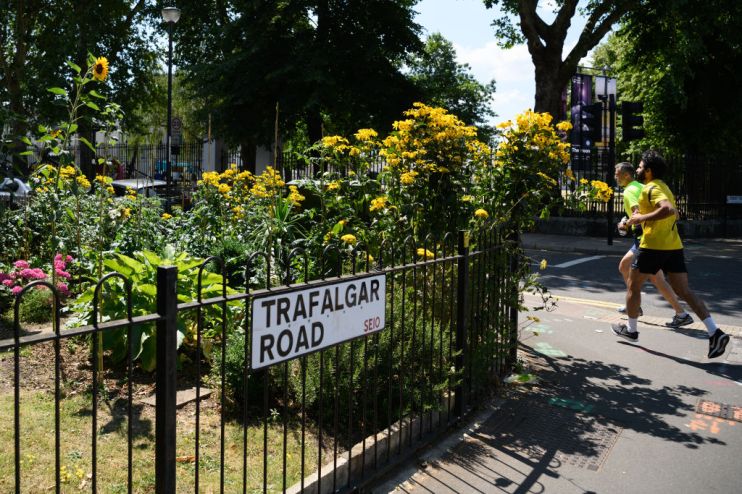Revealed: London’s most polluted parkruns

Scores of Brits have once again vowed to take up a vigorous exercise routine as part of their New Year’s resolutions this year, with parkruns likely to feature highly among to-do lists.
But eager exercisers who fancy taking part in the weekly 5km running events could be in for a nasty surprise, with London’s high levels of pollution putting runners’ respiratory health at risk.
Read more: Experts unsure about the effect of air pollution on the Tube
New research has revealed that a third of parkrun locations around the M25 corridor record levels of nitrogen oxide (NO2) that are close to or higher than the EU safe limit.
Standards set by the EU and the World Health Organisation dictate a safe limit of 40 micrograms per cubic metre (μg/m3) per year on average. Roughly 36 per cent of parkrun courses around the M25 are in breach of this, according to the study.
London’s 10 most polluted runs
| Parkrun Location | NO2 levels (μg/m3) |
| Burgess | 40.8 |
| Mile End | 40.4 |
| Hackney Marshes | 40.2 |
| Southwark | 39.9 |
| Highbury Fields | 39.6 |
| Clapham Common | 39.1 |
| Finsbury | 38.0 |
| Victoria Dock | 37.9 |
| Wormwood Scrubs | 37.6 |
| Beckton parkrun | 37.0 |
Burgess Park in Southwark — the most central circuit — topped the list of London’s most polluted runs, recording NO2 levels of 40.8μg/m3. Mile End and Hackney Marshes followed close behind with scores of just over 40μg/m3.
At the other end of the spectrum was Orpington, which recorded the cleanest air with NO2 levels of just 25.6μg/m3. Harrow Lodge and the Raphael parkrun in Romford also bagged positive scores.
London’s 10 least polluted runs
| Parkrun locations | NO2 locations (μg/m3) |
| Orpington | 25.6 |
| Harrow Lodge | 27.2 |
| Raphael | 27.3 |
| Riddlesdown | 27.6 |
| Hoblingwell | 27.8 |
| Foots Cray Meadows | 28.0 |
| Bromley | 28.4 |
| Bethlem Royal Hospital | 29.4 |
| Roundshaw Downs | 29.6 |
| Lloyd | 29.7 |
“We know that prolonged exposure to high levels of NO2 can cause damage to our lungs and has been linked to childhood asthma, reduced lung growth and reduced brain function,” said David Holmes, founder of renewable energy firm Boiler Guide, which compiled the report.
“We wanted to put this study together to not only inform runners who are trying to keep healthy and have fun, about the impacts of running in areas of high air pollution, but to provide a further call to local councils that work must be done to address the balance.”
Read more: Ulez charge drastically cuts London’s air pollution
Holmes added that the figures were not intended to “scaremonger against parkrun”, which he described as a “brilliant initiative”.
“It’s just a shame that levels of pollution could be having an adverse impact on those running, and that’s something that we all need to be working towards preventing by increasing our focus on renewables and cleaner living,” he said.